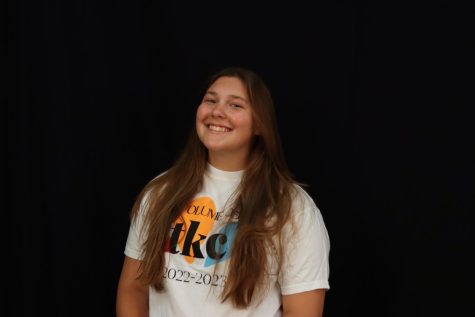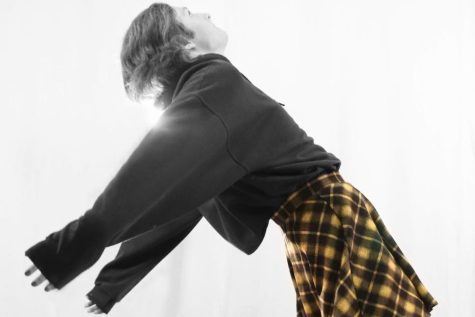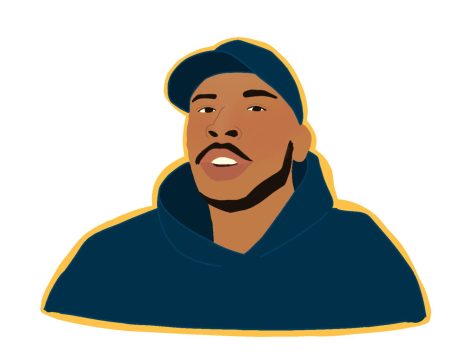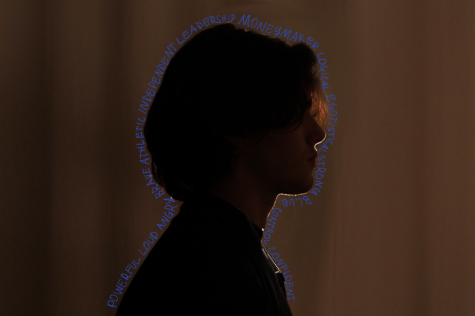Secondhand clothes turned vintage
In 2022, a TKC survey reported that 32% of KHS students thrift regularly.
Roland Bradshaw, freshman, was originally drawn to thrift stores because of their cheap prices, but now, after discovering what Goodwill’s myriad of fashion could bring to his everyday look, he has continued to shop there once every one or two months. Bradshaw is not alone, with a TKC survey reporting that 32% of KHS students thrift regularly.
“I started thrifting because I wanted to change my style, but didn’t want to commit to [spending] a lot of money,” Bradshaw said. “The styles that interest me [use] old clothes, similar to the ones you find in a thrift store.”
In 2020, Piper Sandler reported that about 46% of teens from upper-income households have purchased secondhand clothing. Some teenagers are drawn to thrifting because of the search for old, unique clothing to add to their wardrobes. When someone is able to get their hands on a piece that is 20 years or older, it is considered a “vintage find.” Tammy Heet, co-owner of Assassin Vintage on 3156 Cherokee Street, said the increasing interest in thrifting and vintage clothes among young people is a great thing.
“In the early 2000s, [my co-owner] would tell me that her typical customer was a person who loved [vintage] and would wear it head to toe,” Heet said. “Now, it’s completely different. The pieces [have become] a source of inspiration for individuals to wear as they want. There are no rules.”
The pieces [have become] a source of inspiration for individuals to wear as they want. There are no rules.
— Tammy Heet
Despite only opening their storefront in 2021, Assassin Vintage has been in business for almost five years. Since the COVID-19 pandemic, Heet said she noticed an increase in younger customers interested in not only buying secondhand clothes, but selling them.
“The [thrifting] landscape has changed [from] a handful of vintage sellers to people who did it on the side and are now trying to do it full time,” Heet said. “There’s a lot more competition, but at the same time it’s really amazing. Essentially, it’s just offering more variety.”
The market for selling secondhand clothes has increased significantly, according to CNBC. Now, 82% of Americans are buying or selling secondhand products, with more people selling than buying. This market is dominated by the resale of vintage clothing, with “vintage” being the top selling category on Depop, an online clothing resale store.
Mae Savens, senior, has been selling her old clothes on Depop since her sophomore year. Savens said she tries to avoid selling when she can, but when she finds something rare or vintage that doesn’t fit, she can’t bear to just throw it away.
“[Vintage clothes] are my favorite thing to find,” Savens said. “I really like how unique they are. Sometimes when I find a really good piece, I feel like I need to respect it and make sure it doesn’t go in the dump.”
She said vintage clothes are sentimental and reminiscent of a different time. Not only are they stylish, but they mark historical changes in fashion production.
[This] generation is so much more into developing a personal style.
— Mary Ruppert-Stroescu
“I’m really obsessed with vintage tags,” Savens said. “I like [finding] paper tags [that say] ‘Made in the USA’ that they stopped making [in the] early 2000s or ‘90s. I just love finding cute tags and being like ‘Oh my God, that’s vintage.’”
According to Dr. Mary Ruppert-Stroescu, Associate Professor of Fashion Design at Washington University in St. Louis, thrift stores haven’t always been seen as a place to find vintage fashion. She said that in the 1970s, there were no thrift stores like we know today.
“There were these things called rummage sales [and] churches would have sales,” Ruppert-Stroescu said. “But these were seen as philanthropic, and for people who didn’t have the right means to go to a regular store.”
Now, 16-18% of the U.S. population shops at thrift stores regularly, according to Deal News. Ruppert-Stroescu said that this rise in thrifting as we know it today, didn’t really begin until the ‘90s.
“Designers like Martin Margiela took used clothes and completely transformed them into [fashion],” Ruppert-Stroescu said. “It started becoming really interesting [for] people to go to thrift stores and buy clothes [to] rework them for a very unique look.”
Ruppert-Stroescu has been into vintage clothing since she was a kid in the ‘70s sporting looks from the ‘50s. She said she is excited to see young people shifting the idea of fashion towards self-expression, and away from the trends of the elite.
“[This] generation is so much more into developing a personal style,” Ruppert-Stroescu said. “The variety of what you can find in a thrift store is actually more exciting than going into a retail store where everything is [the same].”
Your donation will support the student journalists of Kirkwood High School. Your contribution will allow us to purchase equipment and cover our annual website hosting costs.

She/Her
Hobbies and Interests: reading, sleeping, starting things I never finish
Favorite song: Yoshimi Battles the Pink Robots Pt. 1 by The Flaming...

She/Her
Hobbies and Interests: reading, hiking, playing cards, hanging with friends, being with my cat
Favorite song: The Rainbow Connection by...




![“[Fashion is] a means to express myself,” Ezra Birman, senior, said. “I can’t imagine a world where I didn’t dress like this.”
Art by Ally Hudson](https://www.thekirkwoodcall.com/wp-content/uploads/2022/03/ezrapolaroid-e1646944084982-475x318.png)


![“[Fashion is] a means to express myself,” Ezra Birman, senior, said. “I can’t imagine a world where I didn’t dress like this.”
Art by Ally Hudson](https://www.thekirkwoodcall.com/wp-content/uploads/2022/03/ezrapolaroid-e1646944084982-300x201.png)











Cynthia Forde • Jan 16, 2023 at 11:22 am
I am so excited that the younger generation are thrifting vintage clothes. This keep items out of the landfills and thus saving our planet.